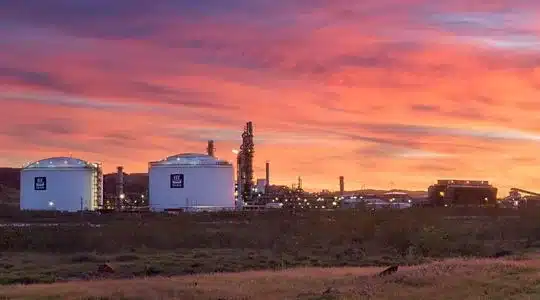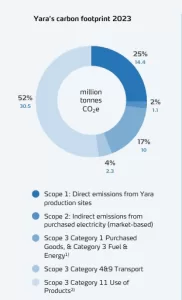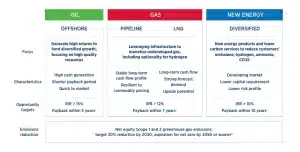In a recent development, Woodside Energy-operated Angel CCS Joint Venture and Yara Pilbara Fertilisers Pty Ltd are allying to explore Carbon Capture and Storage (CCS) technology. The main aim is to decarbonize Yara Pilbara’s operations near Karratha, Western Australia.
Woodside Energy and Yara Pilbara have recognized the urgency of global climate change. Consequently, they have committed to leveraging their expertise to reduce their carbon footprint. The collaboration marks a significant step towards sustainable practices in the energy and industrial sectors in Australia.
The Strategic Objectives of the Partnership
Woodside Energy, the leading global energy company, based in Australia is planning to develop a highly efficient multi-user CCS hub in Australia. This ambitious project can potentially reduce carbon emissions on a large scale.
As part of this endeavor, Yara Pilbara has taken a proactive step by signing a non-binding Memorandum of Understanding (MOU) with the Angel CCS Joint Venture.
The primary goal of this collaboration is to assess the viability of integrating CCS into Yara Pilbara’s existing operations to reduce the environmental impact of fertilizer production, a process known for its substantial carbon footprint.
Woodside Vice President for Carbon Solutions, Jayne Baird, has given a long statement in the media release rolled out this year on April 5. He noted,
“A multi-user CCS hub near Karratha would be ideally located to aggregate emissions from various existing industrial emissions sources across the Pilbara, providing users with advantaged access to a local, low-cost, and large-scale emissions abatement solution – a competitive advantage as jurisdictions around the world implement emissions reduction targets.”
He further added,
“The CCS hub would also have the potential to facilitate the development of new lower-carbon industries, such as the production of hydrogen, ammonia, and green steel, supporting the diversification of the Western Australia economy.”
The proposed facility will be capable of processing ~ 5 million tonnes of CO2 annually. With its mammoth capacity, this CCS hub can become the largest in the Asia-Pacific region.
The initial size of the plant is undecided. It depends on the completion of technical, regulatory, and commercial studies.
Yara’s Investments in Carbon Capture and Storage
Yara is the world’s second-largest ammonia producer, boasting the largest ammonia export and trading network and infrastructure globally. It is strategically positioning itself as a leader in low-emission ammonia production through either renewable energy sources or CCS technology.
source: Yara
This initiative enables Yara to provide fertilizers with reduced carbon footprints to the food sector and supply low-emission fuel to the shipping industry.
Notably, at the Porsgrunn plant in Norway, Yara has constructed Europe’s largest electrolysis plants to date, showcasing its commitment to sustainable practices.
Furthermore, Yara is actively investing in CCS technology at the Sluiskil plant in the Netherlands. And the latest and the most significant is the partnership with Woodside Energy to combat carbon emissions.
Woodside and Angel CCS JV: The Roadmap to Carbon Neutrality
Woodside integrates its climate mitigation ambitions through its company strategy. It aspires to energy transition with a low-cost, lower-carbon, profitable, resilient, and diversified portfolio.
Last year, during an investors’ briefing on Woodside’s Climate Transition Action Plan and Progress Report, CEO Meg O’Neill hailed Angel CCS as Woodside’s most developed CCS opportunity.
Shaun Gregory, the Executive Vice President of New Energy Growth and Operations at Woodside Energy mentioned that Angel CCS is currently in the pre-Front End Engineering and Design (FEED) stage. It will not proceed to the FEED stage until there is greater assurance on CO2 storage from potential customers.
The main objective is to finalize the engineering design study, enter FEED, and secure sufficient customer demand. This would ensure that the project reaches its planned capacity.
- Woodside has committed to achieving net zero emissions by 2050.
- It has allocated $5 billion by 2030 for new energy ventures, including hydrogen, ammonia, and lower-carbon services like CC.
- They have already invested $335 million toward this goal
Apart from Angel CCS, Woodside also has Bonaparte CCS in the Northern Territory and South-East Australia CCS off the coast of Victoria.
The image below shows Woodside’s GHG reduction plan by 2030.
source: Woodside
Carbon Capture and Storage (CCS)- Facilitating New Lower-Carbon Industries
Beyond existing industries, the CCS hub has the potential to foster the development of new, sustainable sectors:
Hydrogen Production: Hydrogen, a clean energy carrier, can be produced using CCS technology.
Ammonia Production: Ammonia, essential for fertilizers and other applications, can also benefit from reduced emissions.
Green Steel: CCS can support steel production with significantly lower carbon impact.
These innovations play a role in broadening the Western Australian economy and fostering the emergence of fresh employment prospects.
If successful, this partnership could serve as a model for other industries seeking to reduce their carbon emissions. By sharing their insights and experiences, Woodside Energy and Yara Pilbara can inspire and influence positive change across various sectors.
- RELATED: Carbon Capture to Urgently Scale to 7 Billion Tonnes/Year to Hit Net Zero (carboncredits.com)




